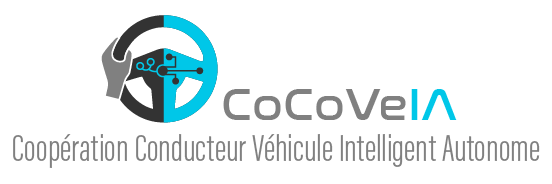The challenges for automating vehicles in situations other than lane keeping and interdistance regulation require that systems be upgraded to have the necessary skills to control the vehicle in complex cases such as crossroads or roundabouts. But how to make sure that the developments do not last for years and that the driver accepts the delegation of its activity and its security to a machine? The ANR CoCoVeA project (2013-2017) laid the foundations for a cooperative system for the automated vehicle (level 2).
Based on its results in shared driving, the CoCoVeIA project aims to integrate this self-learning capability into the system, giving it the ability to analyze and understand the driver's actions during the shared and manual driving phases to achieve two essential objectives:
- The system, learning about simple situations from the actions performed by the driver, will adapt its behavior to the preferences of the driver and thus improve acceptability and confidence.
- The system, learning about complex situations (at the tactical level), will extend its skills and thus become, over time, able to help the driver in more varied situations.
The approach we propose is to allow the system to learn to perform as well as possible well-defined maneuvers, previously modeled in a deterministic way (for the respect of traffic rules and safety) in a context of shared driving (to improve efficiency and acceptability). Suppose that a maneuver achievable by the system is modeled (an insertion, a highway exit, the crossing of a roundabout, ...).
To this end, the present project will propose solutions for increasing the skills of driving controllers via the "progressive learning" properties of the automations, learning made possible through the implementation of a continuous control sharing of the vehicle.
The objectives are multiple:
- Promote the development of automatisms by human behaviors "mimic", while ensuring that these behaviors are compatible with safety;
- Allow drivers to build their confidence in the vehicle through their driving experience;
- To have a better customization of the automated systems’ operation according to the wishes of each driver;
- Design automated driving systems that integrate smoothly into the traffic.
